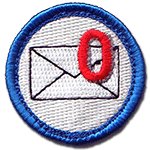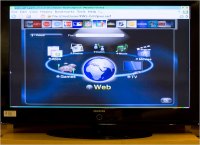1. Topic for your final Paper
How Google is making us brilliant; how Google, Twitter, Facebook, blogs and other tools like these will allow us all to achieve higher collective intelligence on several layers and at several axes.
2. Thesis for your final paper. It is the central idea you would like to present in your final paper. The more specific the better. Please make sure to demonstrate how your thesis is related to the Internet and digital media convergence concepts, theories, or models we have covered in our class.
Google provides an interface to a growing collection of collective knowledge, which with proper training, can be tapped efficiently to help solve any problem that has been previously solved and shared. Twitter allows you to ask the world a question, and get 1,000 answers in an instant. Facebook allows for us all to interconnect on a visual verbal basis, actively or passively, allowing for a more comprehensive look at each other’s (constructed) profiles and provides a way to grasp deeper socio-emotional connections with others. Blogs allow us to quickly produce our own pieces of collective intelligence, feeding Google all the while, providing new fodder for Facebook and Twitter, and generally increasing the amount of known published knowledge with each post.
3. Two articles (academic or professional) that you would like to use in your paper.
Ivana Marenzi, Elena Demidova, & Wolfgang Nejdl. (2008, June 30). DSpace at Open Universiteit Nederland: LearnWeb 2.0. Integrating Social Software for Lifelong Learning. DSpace at Open Universiteit Nederland: LearnWeb 2.0. Integrating Social Software for Lifelong Learning. Retrieved February 22, 2009, from http://dspace.learningnetworks.org/handle/1820/1260?mode=full&submit_simple=Show+full+item+record.
L. Johnson, A. Levine, & R. Smith. (n.d.). 2009 Horizon Report. Retrieved February 22, 2009, from http://wp.nmc.org/horizon2009/.
Readwriteweb, S. P. (2009, January 30). How to Friend Mom, Dad, and the Boss on Facebook…Safely. The New York Times. Retrieved February 22, 2009, from http://www.nytimes.com/external/readwriteweb/2009/01/30/30readwriteweb-how_to_friend_mom_dad_and_the.html?em.
Stone, B., & Stelter, B. (2009, February 19). Facebook Withdraws Changes in Data Use. The New York Times. Retrieved February 22, 2009, from http://www.nytimes.com/2009/02/19/technology/internet/19facebook.html?_r=1&em.
4. Brief summary of the two articles.
LearnWeb 2.0. Integrating Social Software for Lifelong Learning provides a theoretical framework that focuses on the sublime ability for social networks and technology services to enhance learning. This article brings to light some of the ways in which social networks can be particularly utilized in supporting and enhancing teaching and learning. This is in stark contrast to the idea promoted in “Is Google Making us Stupid?”
The 2009 Horizon Report is a yearly prediction of the ways in which current and emerging technologies will affect teaching, learning, and society in general. It is a strikingly accurate and thoroughly enjoyable read for a technologist who has faith in the ways in which technology can help us change for the better.
The two New York Times articles focus on Facebook. One describes best practices for information sharing for the new user, how to avoid the pitfalls of sharing the wrong information or sharing it in the wrong way. The other article speaks about the recent flap in which Facebook changed its terms of service (TOS) to indicate that the content that users add to the system belonged solely to the company forever. A blog post on The Consumerist brought the change light and public scrutiny, and Facebook quickly reverted to its previous TOS language. This speaks to the concepts of collective intelligence, bottom up media vs. top down media, information ownership, and others that help define Digital media convergence.
5. Brief discussion about how the two articles are related to your thesis.
The LearnWeb 2.0 article shows a framework that could potentially exemplify my thesis that learning is enhanced and magnified with the proper application of Social networking tools.
The 2009 Horizon Report defines a long list of technologies and the ways in which they will theoretically affect learning spaces, learners, teaching, distance learning, mobile learners, portable media in learning, and other aspects of gathering and gaining intelligence.
The two New York Times articles on Facebook will help to bring to light issues regarding the broad increase in information sharing and the relevant importance of guiding new users to use the systems properly. It also helps to show the blurry line that exists between producer, consumer, content owner, intellectual property owner, and privacy in the shared online space.


![Reblog this post [with Zemanta]](https://i0.wp.com/img.zemanta.com/reblog_c.png)



 Posted by lemsy
Posted by lemsy 








![Reblog this post [with Zemanta]](https://i0.wp.com/img.zemanta.com/reblog_a.png)